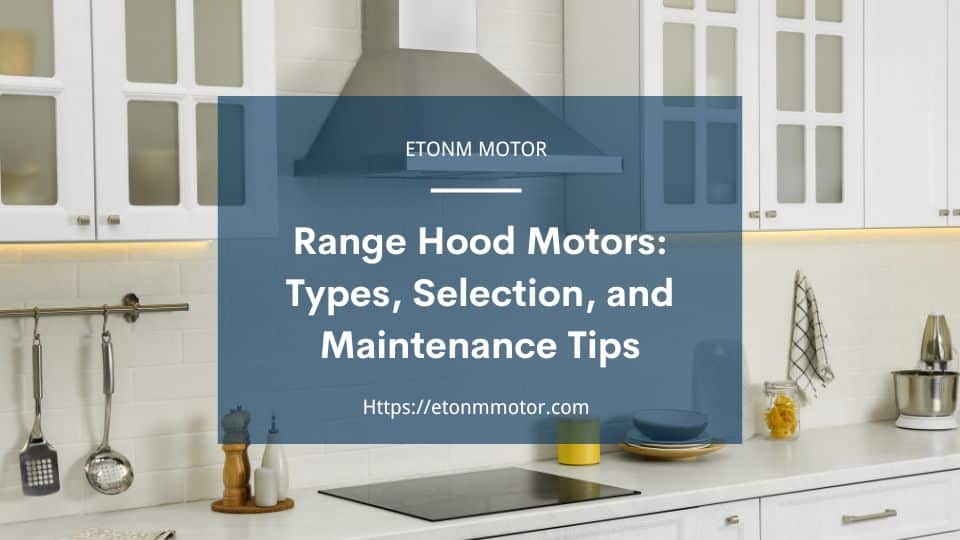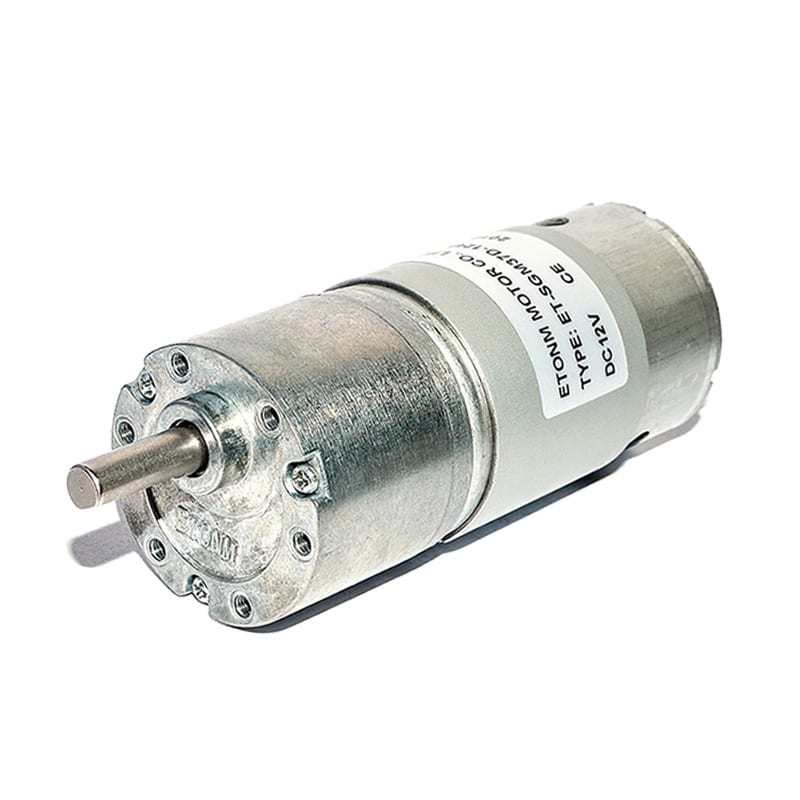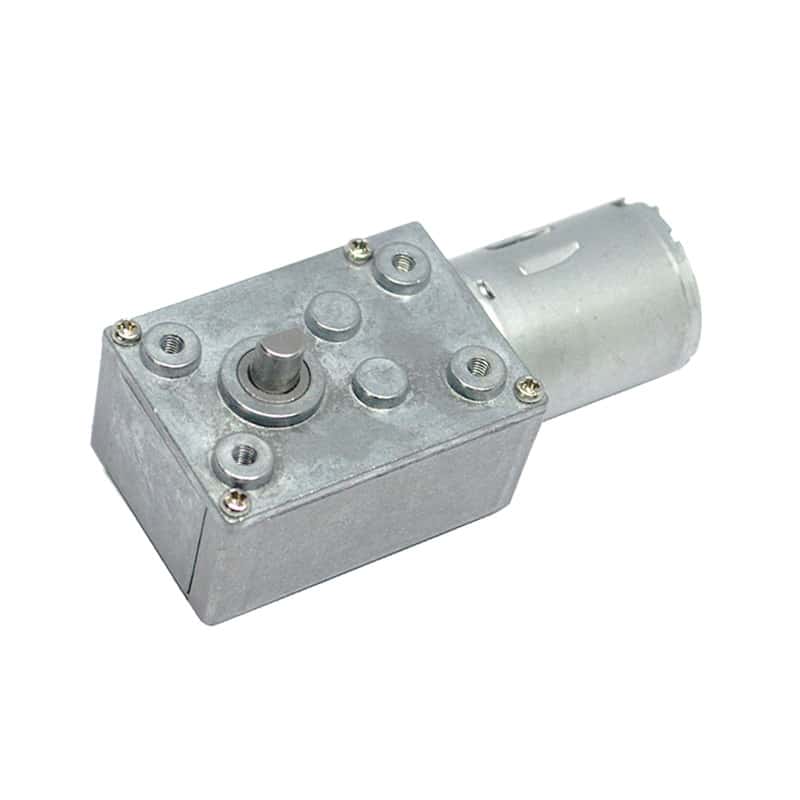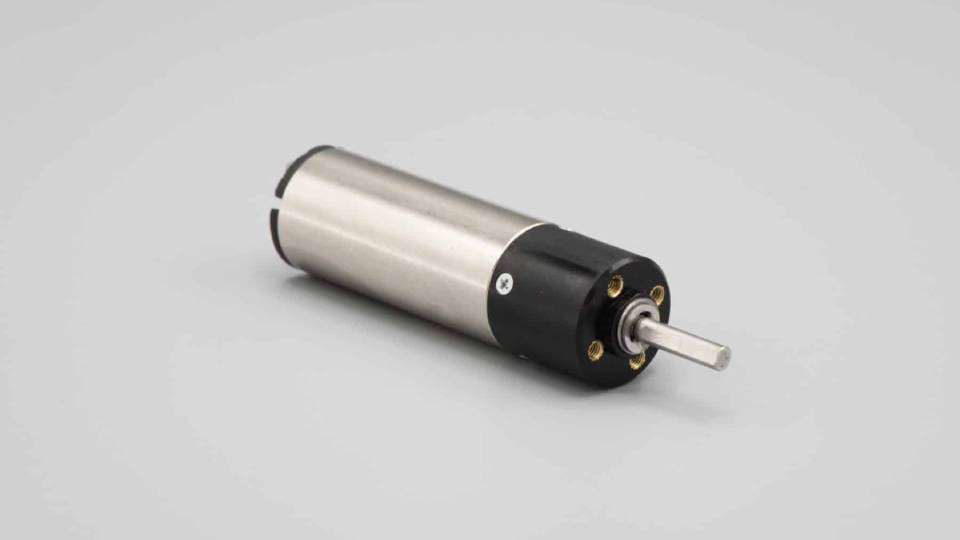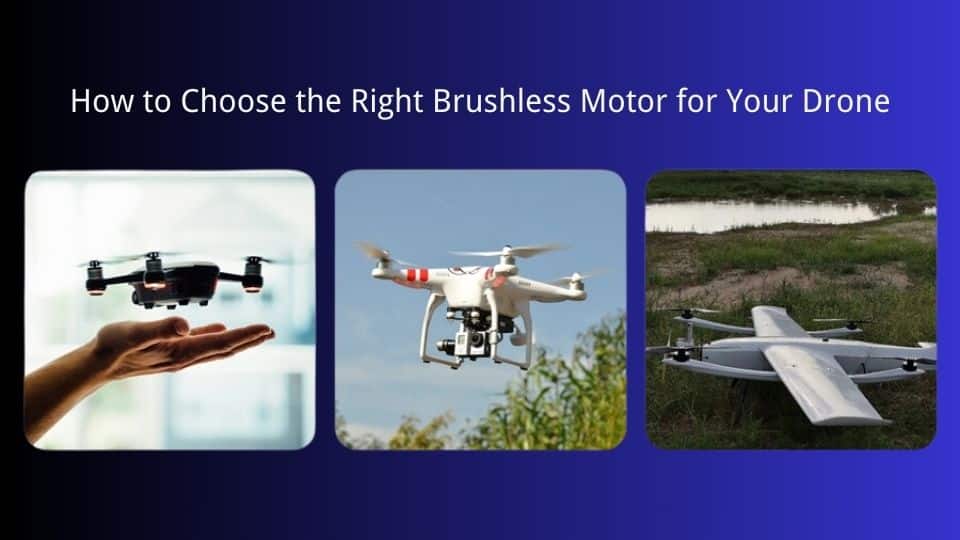"Discover everything you need to know about range hood motors in this guide! Learn about types, how to choose the best one, and maintenance tips to keep your kitchen fresh. Brought to you by Etonm Motor, experts in micro DC and brushless motors."
Table of Contents
Introduction
If you’ve ever found yourself waving away smoke or battling greasy kitchen air after a hearty meal, you know how essential a range hood motor is to keeping your cooking space fresh and clean. This unsung hero powers the fan that sucks up odors, steam, and grease, ensuring your kitchen stays a pleasant place to whip up your favorite recipes. At Etonm Motor, we’ve spent years crafting high-quality motors—including our reliable micro DC and brushless motors—designed to tackle these challenges with ease.
In this guide, we’re diving into everything you need to know about range hood motors. Whether you’re troubleshooting a noisy unit, choosing a new one for your kitchen, or simply curious about how they work, we’ve got you covered. From the different types available to practical maintenance tips, this article will arm you with the knowledge to make the best decisions for your home. So, let’s get started and explore how the right range hood motor can transform your cooking experience!
Types of Range Hood Motors
When it comes to range hood motors, not all are created equal. The type you choose can make a big difference in performance, noise levels, and energy bills. Let’s break down the main options available, so you can pick the one that suits your kitchen best. At Etonm Motor, we pride ourselves on offering versatile solutions, including micro DC and brushless motors, tailored for various applications.
AC Motors
DC Motors
Step up to DC motors, and you’re looking at a game-changer for modern kitchens. These motors are known for their precise speed control and impressive torque, making them a favorite for those who value efficiency. They run quieter than AC motors and sip less power, which can save you money on electricity over time. The downside? They come with a higher upfront cost and require a DC power source. That said, Etonm Motor’s micro DC motors are a great fit here, offering reliability and performance for range hood applications.
Brushless Motors
Comparing Your Options
To make sense of these choices, here’s a quick rundown in the table below. It compares energy efficiency, noise levels, initial costs, and ideal use cases, giving you a clear snapshot to guide your decision:
| Motor Type | Energy Efficiency | Noise Level | Initial Cost | Best Suited For |
|---|---|---|---|---|
| AC Motor | Low | High | Low | Budget-conscious homes |
| DC Motor | High | Low | Medium | Modern, energy-saving kitchens |
| Brushless Motor | Very High | Very Low | High | Premium or quiet environments |
This table highlights why brushless motors might be the luxury pick for a silent kitchen, while AC motors keep things affordable. Pair this with your cooking habits and budget, and you’ll land on the perfect range hood motor for your space.
Other Types
While AC, DC, and brushless motors dominate the scene, you might occasionally encounter other specialized options depending on your range hood model. These are less common but worth a quick mention if you’re dealing with a unique setup.
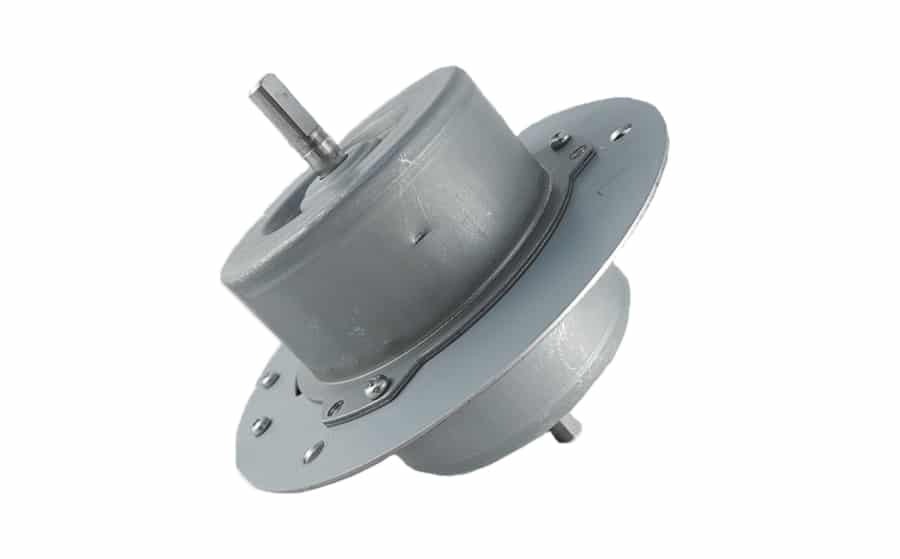
How to Choose the Best Range Hood Motor for Your Kitchen
Picking the right range hood motor can feel like a puzzle, but get it right, and you’ll enjoy a cleaner, quieter kitchen for years to come. With options like those from Etonm Motor—featuring micro DC and brushless motors—it’s all about matching the motor to your cooking style and space. Let’s walk through the key factors to consider so you can make a smart choice.
1. Power and Performance
The heart of any range hood motor is its ability to move air, measured in CFM (cubic feet per minute). For a small kitchen, 300-400 CFM should do the trick, while larger or busier spaces might need 600 CFM or more—especially if you love frying or grilling. Check that the motor’s power aligns with this airflow rate to ensure it tackles smoke and grease effectively. A mismatch here can leave your kitchen hazy, so it’s worth the effort to get this right. Keywords like “range hood motor performance” are key when researching options online.
2. Noise Level
Nobody wants a range hood that sounds like a jet engine during dinner prep. Noise levels, measured in decibels, vary by motor type—DC and brushless motors tend to hum along quietly, while AC motors can get louder under strain. Aim for a model rated below 60 decibels for a peaceful cooking environment. If you’ve ever been annoyed by a noisy kitchen fan, you’ll appreciate the difference a low-noise range hood motor can make.
3. Energy Efficiency
With energy costs on the rise, an efficient range hood motor is a smart investment. DC motors, and especially brushless motors, use less power than their AC counterparts, potentially cutting your electricity bill over time. Look for models with high energy efficiency ratings—your wallet (and the planet) will thank you. This is where Etonm Motor’s offerings shine, delivering performance without the energy waste.
4. Size and Compatibility
A motor’s size matters more than you might think. It needs to fit snugly into your range hood’s design, so double-check the dimensions and model compatibility before buying. If you’re replacing an old unit, consult the manual or a wiring diagram to avoid a headache during installation. Getting the “range hood motor diagram” right ensures a smooth fit with your existing setup.
5. Brand Reputation and Quality
Last but not least, trust matters. Opting for a reputable manufacturer like Etonm Motor guarantees a motor built to last, with quality materials and reliable performance. Our range hood motors are crafted for durability, making them a solid choice for both home and commercial use. For peace of mind, check reviews or reach out to us directly—visit our product page to explore your options.
Maintaining Your Range Hood Motor: Tips and Tricks
A range hood motor is a hardworking component that deserves a little TLC to keep it running smoothly. With proper care, you can extend its lifespan—think 10-15 years on average—and avoid costly repairs. At Etonm Motor, we design our micro DC and brushless motors with durability in mind, but even the best machines need some love. Here’s how to keep your range hood motor in top shape.
1. Regular Cleaning
Dust, grease, and cooking residue are the enemies of any range hood motor. Aim to clean the filters monthly to prevent buildup that can strain the motor and reduce airflow. Use warm water and a bit of baking soda for a gentle scrub, or replace disposable filters as needed—check your manual for specifics. A clogged filter can cause the motor to overheat, shaving years off its life, so don’t skip this step (6 Kitchen Range Hood Maintenance Tips).
2. Inspections for Wear and Tear
Every now and then, give your range hood motor a quick once-over. Look for frayed wires, loose connections, or any signs of wear that could lead to bigger issues. If your motor has lubrication points, apply a drop of the recommended oil to keep it humming along. Catching problems early can save you a headache—and a repair bill—down the road. This is key for maintaining your range hood motor’s longevity.
3. When to Seek Professional Help
Sometimes, DIY fixes won’t cut it. If your motor still won’t start after basic troubleshooting, or if you notice strange noises or smells, it’s time to call in the pros. Repair costs can range from $85 to $210, depending on the issue, but a full replacement might be needed if the damage is severe (Who Fixes Range Hoods? | Angi). Don’t risk a safety hazard—let an expert handle complex repairs or replacements for your range hood motor.
Troubleshooting Common Issues
Even the best range hood motor can hit a snag now and then, leaving you with smoke-filled air or a noisy kitchen. Don’t panic—most problems have simple fixes if you know where to look. Whether you’re dealing with a motor from Etonm Motor or another brand, these troubleshooting tips can help you get back to cooking without the chaos.
1. Motor Not Starting
If your range hood motor refuses to kick on, start with the basics. Check the power switch and ensure the circuit breaker hasn’t tripped—nothing’s more frustrating than a flipped switch ruining your dinner prep. Next, inspect the wiring for loose connections and refer to a range hood motor wiring diagram to confirm everything’s hooked up right. If the motor still won’t budge, it might be a sign of internal damage, and you’ll need to dig deeper or call a pro.
2. Noisy Operation
A sudden racket from your range hood can be a real mood-killer. This often points to loose parts or debris rattling around inside. Give the unit a quick check for anything out of place, like a stray utensil or buildup, and tighten any wobbly components. Proper alignment during installation can also cut down on vibrations. For a quieter ride, a brushless motor from Etonm Motor might be worth considering next time.
3. Reduced Airflow
When your range hood isn’t pulling air like it used to, the culprit is usually a clogged filter or a blocked vent. Pop out the filter and give it a good clean—or replace it if it’s seen better days. Also, peek at the exhaust duct to ensure it’s clear of obstructions. A well-maintained range hood motor performs best, so regular upkeep is your friend here.
4. Other Common Problems
Overheating can happen if the motor’s working overtime—make sure it’s well-ventilated and not running non-stop. An odd burning smell? That’s a red flag for electrical issues or overheating, so unplug it and get a professional to take a look. Addressing these quirks early keeps your range hood motor running smoothly.
Understanding Range Hood Motor Diagrams
If you’ve ever peeked inside a range hood or tried to replace a motor, you’ve probably come across a range hood motor diagram—and wondered what all those lines and symbols mean. This little blueprint is your roadmap for installation, maintenance, and troubleshooting, making it a must-know for anyone tackling a DIY project. At Etonm Motor, we design our micro DC and brushless motors with clear documentation in mind, but let’s break it down so you can feel confident using one.
A range hood motor diagram shows the wiring layout, connecting the motor to the power source, switches, and other components. You’ll see labels for wires (like live, neutral, and ground) and sometimes color codes to guide you. For example, it might indicate where to attach the motor to the fan or how to link it to the range hood’s control panel. If you’re swapping out an old motor, matching the diagram to your unit’s setup is crucial to avoid a messy mismatch.
Where do you find one? Start with your range hood’s manual—most manufacturers include a diagram tailored to the model. If that’s missing, online resources like forums or manufacturer websites can help (Range hood wiring diagram | Skoolie Forum). Not a wiring wizard? No worries—skip the guesswork and call a professional to handle it safely.
Range Hood Motor Replacement Cost
Facing a range hood motor that’s given up the ghost? Replacing it is a practical move, but the cost can vary depending on a few factors. Whether you’re eyeing a durable option from Etonm Motor or another brand, understanding the price range and what drives it can help you plan your budget wisely.
The cost of a range hood motor replacement typically falls between $85 and $500, depending on the motor type, brand, and where you buy it. Basic AC motors lean toward the lower end—around $85 to $150—making them a budget-friendly choice for quick fixes. On the other hand, high-efficiency DC or brushless motors, like those we craft at Etonm Motor, can run $200 to $500 due to their advanced technology and longevity. Labor charges, if you hire a pro, might add $50 to $100, especially for complex installations (Who Fixes Range Hoods? | Angi).
What influences the price? Motor quality plays a big role—cheaper models might save cash upfront but could fail sooner. Retailer markups and shipping fees also add to the total. To strike a balance, consider the long-term value: a pricier, energy-efficient range hood motor replacement cost might pay off with lower energy bills and fewer replacements down the road.
Commercial vs. Residential Range Hood Motors
Not all range hood motors are created equal—there’s a big difference between those built for homes and those designed for commercial kitchens. Whether you’re outfitting a cozy kitchen or a bustling restaurant, understanding these distinctions can guide your choice. At Etonm Motor, we offer versatile solutions, including micro DC and brushless motors, tailored to both settings.
Residential range hood motors prioritize quiet operation and energy efficiency, perfect for family dinners or late-night baking. They typically handle airflow rates of 300-600 CFM, suitable for standard home cooking. The focus here is on a peaceful environment and lower power use, with models like our brushless motors shining for their whisper-quiet performance.
Commercial vent hood motors, on the other hand, are built for heavy-duty action. They need to manage higher airflow—often 1,000 CFM or more—to handle intense cooking like frying or grilling in a restaurant. Durability is key, as they face constant use, and noise control is less critical since kitchens are already busy. These motors are sturdier, often requiring robust designs that Etonm Motor can customize to meet commercial demands.
The takeaway? Match the motor to the task. For home use, prioritize efficiency and silence; for commercial spaces, go for power and toughness. Check with us at Etonm Motor to find the perfect fit for your needs.
Conclusion
Choosing, maintaining, and troubleshooting a range hood motor doesn’t have to be a daunting task. From understanding the differences between AC, DC, and brushless motors to picking the right power and noise level for your kitchen, you’re now equipped with the know-how to make informed decisions. Regular cleaning and timely inspections can keep your range hood motor humming for years, while a quick glance at a wiring diagram or a call to a pro can solve most hiccups. And if replacement is on the horizon, weighing the range hood motor replacement cost against long-term benefits is a smart move.
At Etonm Motor, we’re proud to offer high-quality micro DC and brushless motors tailored for both residential and commercial needs. Whether you’re upgrading your home kitchen or outfitting a busy restaurant, our solutions deliver reliability and efficiency. Ready to find the perfect motor for your range hood? Visit our product page to explore our range, or contact us for personalized advice. Let’s keep your kitchen air fresh and your cooking experience seamless!
Recommended Motors for range hood
Related Reading
- Exploring Robot Motors: A Comprehensive Guide
- Choosing the Right BBQ Motor: Expert Tips from Etonm Motor
- Valve Motor Guide: Types and Uses by Etonm Motor
- Smart Lock Motor Solutions for Modern Security
- DC Motor Types: A Guide to Choosing the Right Model
- How to Choose a Gear Motor for Your Project
- Mini DC Motor Selection Guide
- Soap Dispenser Motor: Powering Hygiene With Etonm Motor
- Coffee Machine Motor: Key Features and Benefits
- Blinds Motor Guide: Choosing the Best Option
- 12V DC Air Pump Motors: Small Size, Big Pressure

